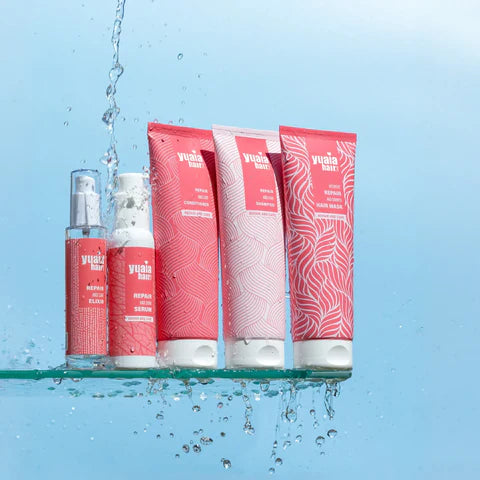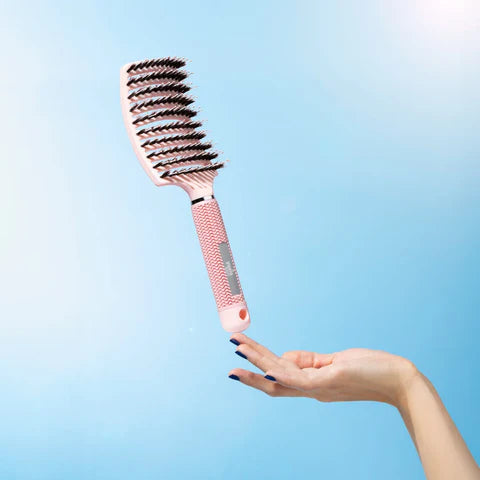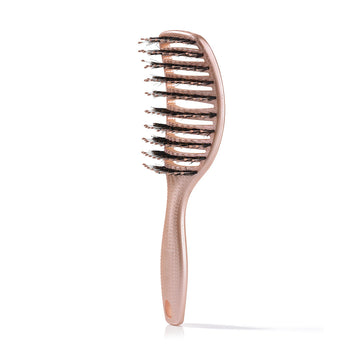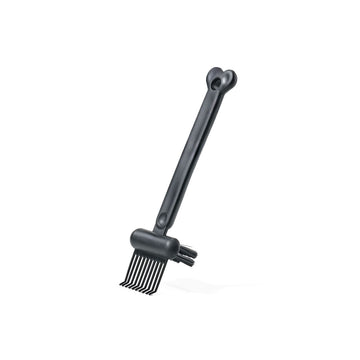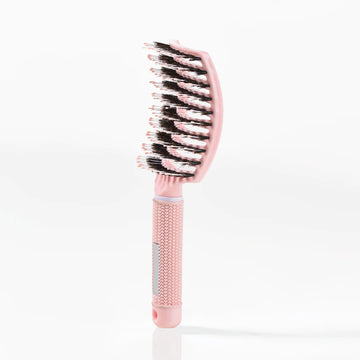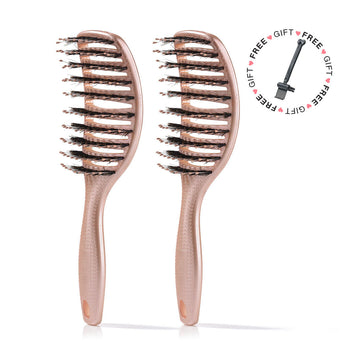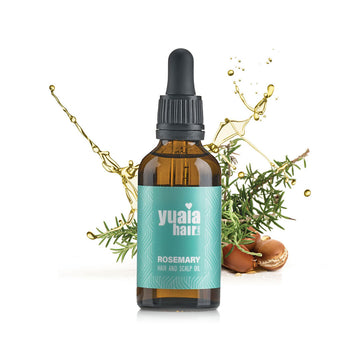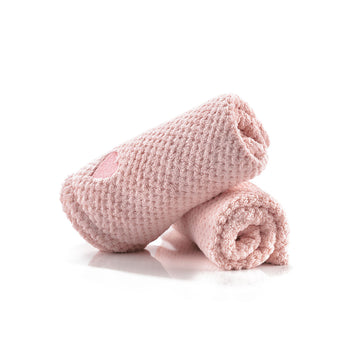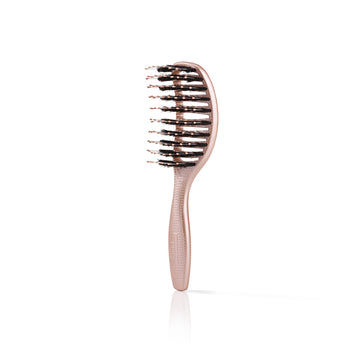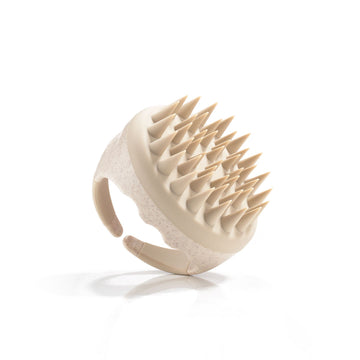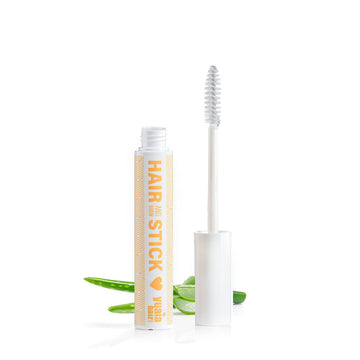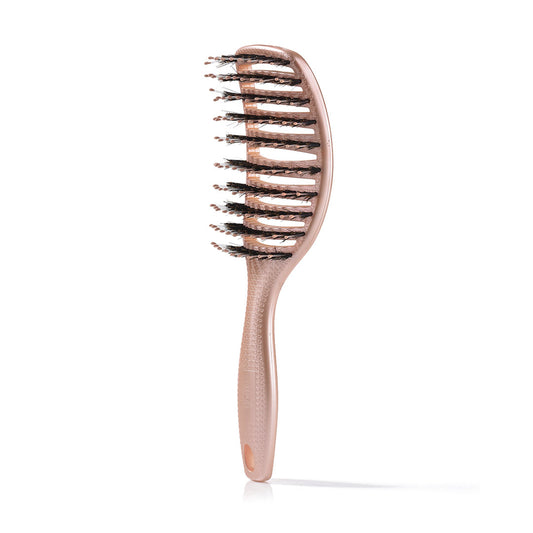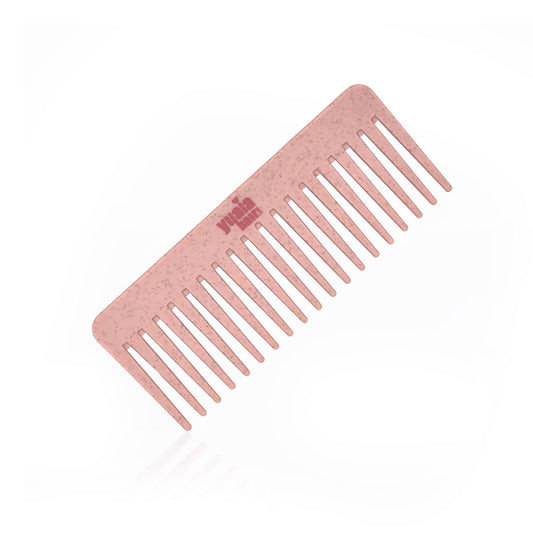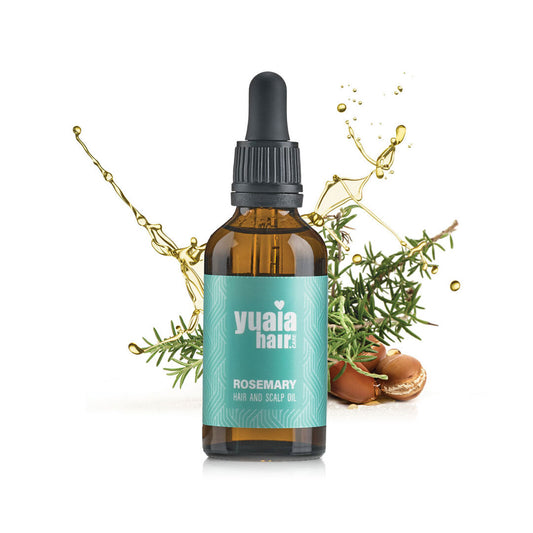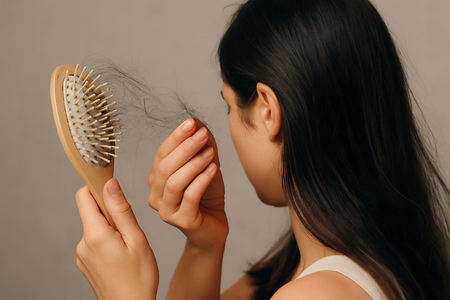
The Misunderstanding Between Shedding and Breakage
The key to effective hair care lies in understanding the difference between hair shedding and hair breakage. Misidentifying the issue can lead to ineffective or even damaging hair care practices. Hair shedding involves the loss of whole strands with the root bulb attached, often as a result of physiological changes or stressors. On the other hand, hair breakage is due to external damage, such as overuse of heat styling tools, chemical treatments, or rough handling, leading to shorter, snapped-off strands.
Importance of Proper Identification
Recognizing whether you are experiencing hair shedding or hair breakage is important for implementing the right hair care methods. For instance, if you are dealing with hair breakage, focusing on gentle hair care practices, such as using a boar bristle brush for detangling, can help minimize further damage. On the other hand, if hair shedding is the issue, addressing underlying stressors and allowing time for recovery is often the best approach. Proper identification not only helps in choosing the right products and techniques but also in setting realistic expectations for hair recovery and health.
What are the Key Differences Between Hair Shedding and Hair Breakage?
Understanding the distinction between hair shedding and hair breakage is essential for addressing hair loss effectively. Hair shedding is a natural process where 50 to 100 hairs are lost daily as part of the hair's growth cycle. This can be triggered by physiological factors such as stress, hormonal changes, or recovery from illness. Excessive shedding, known as telogen effluvium, often resolves within 6 to 9 months after the stressor is addressed.
In contrast, hair breakage results from external damage rather than the natural growth cycle. This damage can stem from friction, chemical treatments, heat styling, or rough handling. Breakage is characterized by shorter, snapped-off hair, which may appear uneven and brittle.
How to Identify Hair Shedding vs Hair Breakage?
Recognizing whether your hair loss is due to shedding or breakage is crucial for implementing the right care strategies. Hair shedding typically involves full-length hairs with a bulb at the end, indicating they have fallen out naturally from the scalp. This can often be seen when washing or brushing your hair, where you might notice a small white bulb at the root of the hair.
On the other hand, hair breakage is identified by shorter hair pieces that do not have the root bulb. These are often a result of external damage and can make the hair feel rough and look uneven. Breakage can be more prevalent near the ends of the hair, where damage is most likely to occur.
What Causes Hair Shedding and Hair Breakage?
Hair shedding can be triggered by a variety of factors, including stress, medical conditions, or significant life changes such as childbirth or surgery. These events can push more hairs into the shedding phase, leading to noticeable hair loss.
Hair breakage, however, is often the result of dryness, over-manipulation, and friction. Frequent use of heat styling tools, chemical treatments, and even harsh brushing can weaken the hair, causing it to snap. To help prevent breakage, consider using gentle hair accessories and minimize the use of damaging styling methods.
By understanding the differences between hair shedding and breakage, you can tailor your hair care routine to address the specific issue, leading to healthier hair over time.
How to Prevent Hair Breakage Effectively
Preventing hair breakage involves adopting a gentle approach to hair care. Minimizing the use of heat styling tools is one of the most effective ways to protect your hair from damage. If heat styling is necessary, always apply a heat protectant to shield your hair from high temperatures. Additionally, using a boar bristle brush can aid in gentle detangling, reducing the risk of breakage. Regularly moisturizing your hair with nourishing oils, such as rosemary oil, can also help maintain its strength and flexibility.
Addressing Excessive Hair Shedding
Excessive hair shedding can often be linked to stress or physiological changes. Identifying and managing these underlying factors is key to addressing the issue. While shedding can be distressing, it's important to remember that it usually resolves on its own once the stressor is removed. During this period, maintaining a balanced hair care routine and avoiding harsh treatments can support your hair's natural recovery process.
Frequently Asked Questions
How Much Hair Loss is Considered Normal?
Losing 50-100 hairs a day is typical and part of the natural hair growth cycle. If you notice significantly more hair loss, it may be worth considering other factors such as stress or health changes.
Can Hair Breakage be Reversed?
While you cannot reverse hair breakage, you can improve hair care practices to restore hair health. By using less heat, moisturizing regularly, and handling hair gently, you can reduce further breakage and promote healthier hair growth.
Is Hair Shedding Permanent?
Hair shedding is typically not permanent. It often resolves naturally over time, especially once any underlying stressors or physiological changes are addressed. Patience and consistent care are essential during this period.
 2-5 day delivery
2-5 day delivery
 25.000+ satisfied customers
25.000+ satisfied customers
 Satisfaction Guarantee
Satisfaction Guarantee



